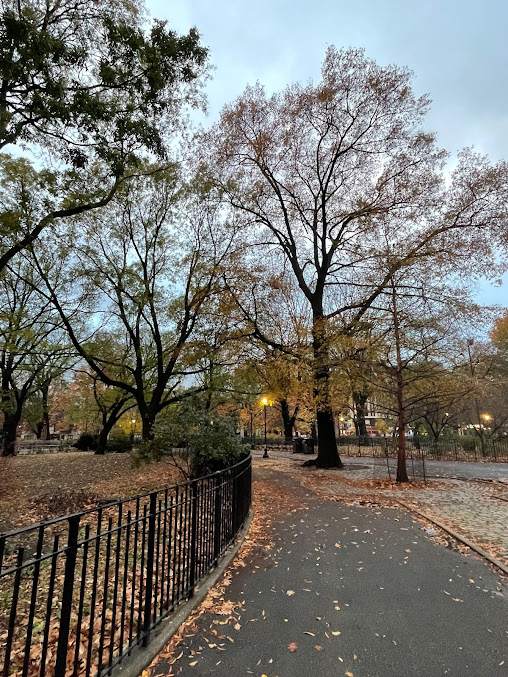(Drivebycuriosity)
- Lawrence Osborne belongs to the stars of contemporary British Literature and is known for "Hunters in the Dark", "The Glass Kingdom", "Beautiful Animals" and other novels. Before he became a successful novelist he traveled the world as a journalist and wrote long-form pieces for The New York Times Magazine, The New Yorker, Gourmet, Salon, Playboy, and Condé Nast Traveler ( wikipedia).
Around the year 2001 - being a wine journalist - Osborme visited the grape growing regions of Italy, California & France. The book "The Accidental Connoisseur: An Irreverent Journey Through the Wine World" (published 2004 ) presents his insights ( amazon).
Competing Vines
Osborne talked with a lot of vintners, from small artisan producers to California`s wine Cesar Robert Mondavi and visited "Opus One ", a joint venture by Mondavi and Philippe de Rothschild, the ne plus ultra of high-technology wine making and "the most expensive winery ever built in Napa, or indeed in the world". He tasted zillions of wines and spiced his reports with descriptions of landscapes, wineries, villages and restaurant dinners.
I learned a lot about the wine business, its chemistry, politics & economics: "Because France is such a potent exporter, she cannot afford to ignore the dictates of her customer tastes, and Anglo-Saxon tastes, are not necessarily her own". Osborne complains about the French xenophobia: "It´s true that French wine store are
generally provincial: no Italian or Spanish wine, no great German
whites, almost nothing from the New Word. The French know nothing about
global wines".
I also learned that "widely spaced vines are únstressed`, which tends to make them larger and more productive. The more unstressed a plant is by nearby competitor plants, the more relaxed and happy it feels. And the more relaxed and unthreatened it feels, the more energy it puts into growing leaves and fruit. Conversely, the more stressed a vine is by being too close to a competitor, the more energy it puts into reproducing itself - that is, it puts more energy into the grapes. It does not produce more of them, but the grapes it does produce have greater density and complexity". And he observed that oak is "a blunt weapon in the vintners armory - giving cheaper
wines a superior vanilla-tasting gloss which often disguised their inner
vaults". But Osborne believes that the practice of throwing oak chips into fermenting wine
has mercifully lost much of its respectability.
Farmers On Warpath
Osborne encountered very different philosophies and strategies. Some of the
interviewed vintners were Marxists and followers of Trotzky, co-founder of the Soviet Union, others
represent American capitalism. He visited an area of southern France that he calls a "militant country
where farmers regularly torch McDonald´s branches and loot supermarkets. There were riots and the vintners revolted against overproduction, even
though they party caused by themselves. These farmers were on warpath against globalization, hamburgers, and canned fruit,
and for Europe`s, if not the world`s, most extravagant farm subsidies.
The french Farmer, who is largely subsidized by the urban taxpayers of
all the other countries of the European Union, can smell the end of his
golden age. The Germans and the British are tired of paying for him" (my
comment: Brexit was partly as response and ended that for the British. Michel Houellebecq describes the same issue with French dairy farmers in his novel "Serotine" my review ).
Tastes Like Melted Asphalt?
There is a portrait of the American wine author Robert Parker, Jr., who`s publications have been treated as the bible of wine connoisseurs and restaurant owners. The francophile was awarded by the Legion d`Honneur by President Jacques Chirac for oiling the giant French marketing machine. Parker was called the greatest ambassador of French wine in the world. He tasted 125 cheaper wines a day, and 75 a day for vintages of higher pedigee. He tastet approximatiely ten thousand wines a year and claimed to be able to remember each one as if photographically. Aparently Parker had literasry ambitions, he often talked of wines that taste like "melted asphalt", "crisp stones", "crushed seashells" or "caramel-coated autumn leaves". He declared that a Mongard-Mugnerate Burgundy has a "thick-txtured chewy personality" and a Grand Echézeux, also from his beloved France, exhibits "deep, sensual, spicy berry fruit aromas and and an intense, concentrated, chewy, blackberry, dark cherry, currant and Asian spice-packed, velevety-textured palate leading to a long, rich and sweet finish". Maybe Parker´s meeting with Jacques Chirac led to "long, rich and sweet finish" as well.
I got envy about Osborne`s meals in Italian restaurants, especially his dinner at Gamba Rosso in the South: "Tuna marinated with figs, chickpea soup with prawns, monkfish with asparagus and white truffles, seafood ravioli, sea bass with artichokes, cheese with chestnut honey - pecorino di foss, chevre with chestnut leaves - and then crepes with warmed agrumi, or citrus fruits. At the end of this wondrous menu came cold grapes covered with chocolade and with the leave still attached". Yummy and light years away from what the Italian food dumps in New York serve.
And there was another insight: "Being a connoisseur is the one consolation of growing old".
"The Accidental Connoisseur" is fun to read and educating as well.




































